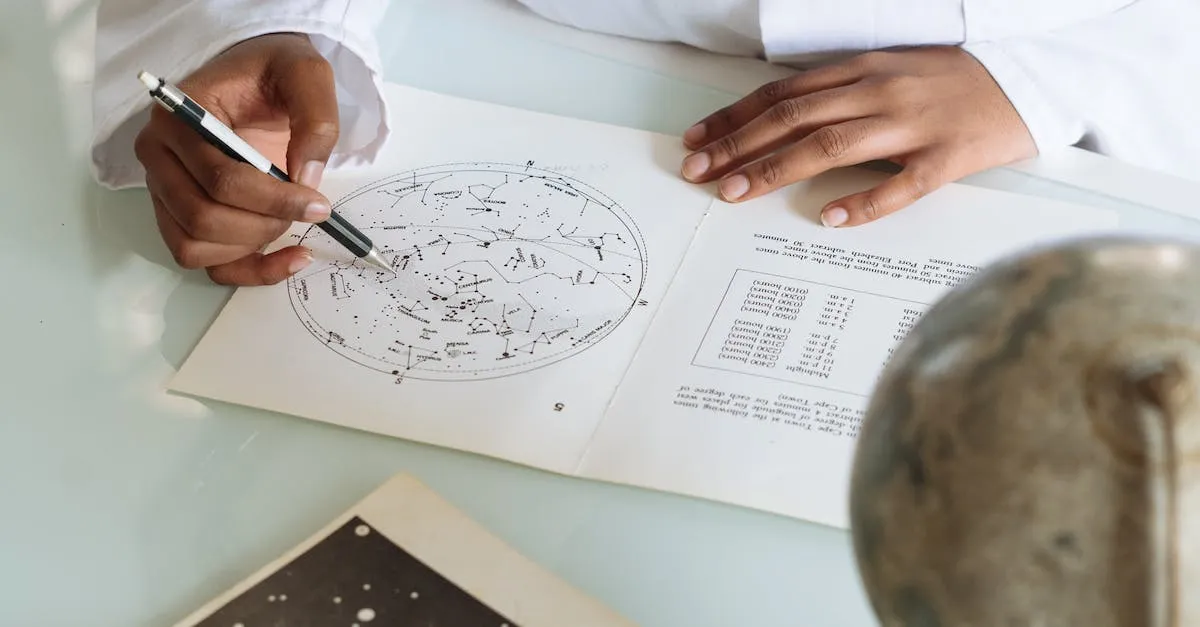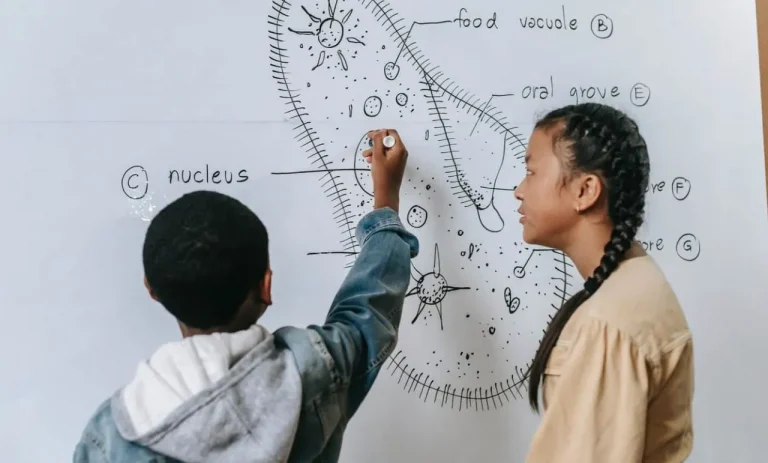Is Geography An Art Or A Science?
Geography occupies a unique space among scholarly disciplines with its blend of scientific analysis and creative expression. But is it fundamentally an art or a science? The quick answer is that geography is considered a science due to its quantitative analysis methods and study of physical processes.
However, its qualitative aspects and ability to interpret connections make it a hybrid field that bridges science and art.
In this comprehensive article, we’ll analyze the scientific and artistic components of geography. We’ll look at quantitative techniques that align it with sciences and discuss how geographic visualization incorporates art.
Overall, we’ll demonstrate how geography requires both scientific rigor and creative thinking, making it a fusion of arts and science.
Defining the Key Aspects of Arts and Sciences
Characteristics of the Sciences
When it comes to the sciences, there are several key characteristics that set them apart from other disciplines. First and foremost, sciences are based on empirical evidence and rely heavily on observation and experimentation.
Scientists use the scientific method to formulate hypotheses, conduct experiments, and analyze data to draw conclusions. This rigorous approach ensures objectivity and reproducibility in scientific research.
In addition, sciences often strive for precision and accuracy. They aim to uncover universal laws and principles that govern the natural world. This requires a systematic and logical approach, where theories and models are developed and tested against empirical evidence.
Scientific fields such as physics, chemistry, and biology are prime examples of disciplines that embody these characteristics.
Moreover, sciences often prioritize objectivity and strive to minimize bias. They rely on data-driven analysis and aim to eliminate subjective interpretations. This helps ensure that scientific findings are reliable and can be replicated by other researchers.
The use of statistical analysis is common in scientific research to quantify and validate results.
For more information on the characteristics of sciences, you can visit National Academies.
Characteristics of the Arts
The arts, on the other hand, encompass a wide range of creative and expressive disciplines. Unlike the sciences, the arts are not bound by the same strict rules of objectivity and replicability. Instead, they prioritize subjectivity and individual interpretation.
Artistic expression allows for a wide range of personal styles, emotions, and perspectives.
One of the key characteristics of the arts is creativity. Artists have the freedom to explore and push boundaries, often creating works that challenge societal norms and conventions. They use their imagination and intuition to convey their ideas and emotions through various mediums such as painting, sculpture, music, dance, and literature.
Another characteristic of the arts is the emphasis on aesthetics and sensory experiences. Artists aim to evoke emotional responses and engage the senses of the audience. They use color, texture, sound, movement, and language to create visually and auditory captivating experiences.
The arts also have the power to communicate and reflect cultural, social, and historical contexts. They can serve as a means of storytelling, preserving traditions, and promoting social change. Artists often use their work to express their personal experiences, beliefs, and perspectives.
For more information on the characteristics of arts, you can visit Khan Academy.
Scientific Aspects of Geography
Use of the Scientific Method
Geography is not only a discipline that describes the earth’s physical features and human activities, but it is also deeply rooted in the scientific method. Just like any other scientific field, geographers use systematic observation, experimentation, and analysis to gather data and draw conclusions about the world around us.
They formulate hypotheses, design experiments, collect data through fieldwork or remote sensing technologies, and analyze the data using statistical methods. This rigorous approach allows geographers to make objective and evidence-based claims about various geographic phenomena.
Quantitative Analysis and Modeling
One of the key scientific aspects of geography is the use of quantitative analysis and modeling. Geographers employ various mathematical and statistical techniques to analyze spatial patterns, relationships, and trends.
They use geographic information systems (GIS) to collect, store, manipulate, and analyze spatial data. By using these tools, geographers can create accurate maps, visualize data, and make informed decisions about land use, urban planning, environmental management, and other important geographical issues.
Quantitative analysis and modeling enable geographers to study complex geographic systems and predict future scenarios.
Study of Physical Processes and Laws
Geography also involves the study of physical processes and laws that govern the Earth’s natural phenomena. Geographers explore topics such as weather and climate patterns, plate tectonics, erosion, and the formation of landforms.
They investigate the interactions between physical elements like rocks, water, atmosphere, and living organisms to understand how they shape the Earth’s surface and influence human activities. By studying these physical processes, geographers contribute to our understanding of natural hazards, environmental change, and sustainable resource management.
Artistic and Subjective Aspects of Geography
While geography is often considered a scientific discipline that deals with the study of the Earth’s physical features and the relationships between humans and their environment, it also encompasses artistic and subjective aspects.
These aspects allow geographers to explore and interpret the world around us in unique and creative ways.
Geographic Visualization
One of the artistic aspects of geography is geographic visualization. Geographers use various techniques to visually represent spatial data, such as maps, charts, and infographics. These visual representations not only provide a clear understanding of spatial patterns and relationships but also have the ability to evoke emotions and convey messages effectively.
For example, a map can be designed to highlight the distribution of natural resources or the impact of climate change, bringing attention to important environmental issues.
Interpretation of Human and Cultural Landscapes
Geography also involves the interpretation of human and cultural landscapes. Geographers study how humans interact with their surroundings and how these interactions shape the landscapes we see today. This interpretation goes beyond mere observation and involves understanding the historical, social, and cultural contexts that influence the formation of landscapes.
By examining the built environment, cultural practices, and symbolic representations, geographers can provide insights into the human experience and the ways in which people shape and are shaped by their surroundings.
Qualitative Research Methods
In addition to quantitative methods, geography also embraces qualitative research methods. Qualitative research allows geographers to delve into the subjective experiences and perspectives of individuals and communities.
By conducting interviews, participating in fieldwork, and analyzing narratives, geographers can gain a deeper understanding of the human-environment relationship. This qualitative approach provides valuable insights that complement quantitative data, allowing for a more comprehensive and holistic understanding of geographical phenomena.
The artistic and subjective aspects of geography enhance our understanding of the world by adding depth, creativity, and nuance to the scientific study of the Earth. By incorporating these aspects into their work, geographers are able to communicate complex ideas and engage with a wider audience, bridging the gap between art and science.
Geography’s Interdisciplinary Nature
Geography is a field of study that encompasses both scientific and artistic elements, making it a truly interdisciplinary subject. It combines the observation and analysis of physical and human phenomena with the creative interpretation and representation of spatial relationships.
This unique blend of science and art allows geographers to explore the world from multiple perspectives, providing valuable insights into the complexities of our planet.
A Scientific Approach
Geography as a science focuses on understanding the physical characteristics of the Earth, such as landforms, climate patterns, ecosystems, and natural resources. Geographers use scientific methods to collect data, analyze patterns, and make predictions about the Earth’s processes and their impact on human and natural systems.
They employ techniques such as remote sensing, Geographic Information Systems (GIS), and statistical analysis to study spatial patterns and relationships.
For example, geographers use satellite imagery and GIS to track changes in land cover over time, helping us understand the effects of deforestation or urbanization on the environment. They also use statistical models to analyze population growth and migration patterns, providing insights into the social and economic dynamics of different regions.
An Artistic Perspective
On the other hand, geography also embraces an artistic approach, allowing geographers to creatively communicate their findings and interpretations. Through maps, graphs, and visualizations, geographers can represent complex spatial information in a visually appealing and understandable way.
These visual representations help us grasp the patterns and relationships between different geographic phenomena.
Maps, in particular, are powerful tools that combine scientific data with artistic design. They can convey information about physical features, cultural characteristics, and even historical events. By using colors, symbols, and labels, cartographers create visually appealing maps that are not only informative but also aesthetically pleasing.
The Power of Interdisciplinary Collaboration
The interdisciplinary nature of geography allows for collaboration with other fields, such as environmental science, sociology, economics, and urban planning. By combining knowledge and methodologies from various disciplines, geographers can tackle complex issues that require a holistic understanding of the interconnectedness of our world.
For example, geographers working with environmental scientists can study the impacts of climate change on vulnerable communities, examining both the physical changes in the environment and the social and economic challenges faced by those communities.
This interdisciplinary approach helps inform policy decisions and design strategies for sustainable development.
Scientific Rigor and Artistic Creativity in Geography
Geography is a discipline that combines scientific rigor with artistic creativity. It is often debated whether geography is more of an art or a science, but the truth is that it encompasses elements of both.
While geography is grounded in scientific methodologies and principles, it also requires the use of creativity and imagination to understand and interpret the world around us.
Scientific Rigor in Geography
Geography is undeniably a science, as it involves the systematic study of the Earth’s physical features, climate patterns, natural resources, and human activities. Geographers use a range of scientific methods, including data collection, analysis, and interpretation, to investigate spatial relationships and patterns.
They employ tools such as geographic information systems (GIS), remote sensing, and statistical analysis to gather and analyze data, allowing them to draw meaningful conclusions about the world we live in.
For example, geographers use satellite imagery and aerial photographs to map the Earth’s surface and monitor changes over time. They also conduct fieldwork, collecting data on the ground to study phenomena such as urbanization, migration patterns, or the impacts of climate change.
By applying scientific principles and methodologies, geographers can provide objective insights into various geographical phenomena.
Artistic Creativity in Geography
While geography involves scientific rigor, it also requires artistic creativity to understand the complex interactions between humans and their environment. Geographers often employ visualization techniques to communicate their findings effectively.
They create maps, charts, and diagrams that simplify complex spatial relationships, making them more accessible to a wider audience.
Moreover, geographers often use qualitative research methods, such as interviews, surveys, and ethnographic observations, to gain insights into the human experience of place. These methods allow them to understand the subjective perspectives and emotions associated with different locations.
By incorporating these qualitative aspects, geographers can provide a more holistic understanding of the world around us.
Conclusion
While geography possesses many scientific facets involving quantitative analysis, measurement, and study of physical laws, it also requires creative and subjective skills to visualize and interpret human landscapes.
This fusion of scientific rigor and artistic creativity makes geography a unique interdisciplinary field that bridges arts and science.
By incorporating strengths from both ends of the spectrum, geographers develop holistic perspectives on the relationships between humans and their environments. This is why geography remains fundamental for education and research.







